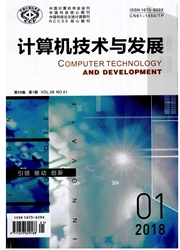

 中文摘要:
中文摘要:
虚拟网络映射是一种解决未来互联网发展问题的关键技术,该技术能够使多个异构的虚拟网络共存于同一个物理网络,共享底层资源。但目前的虚拟网络映射算法大多是针对网络负载较高的情况,且多属启发式的映射算法,在网络负载较低时,虚拟网络映射可能引起底层资源不能被充分利用,导致网络能耗的浪费。随着大规模网络的发展,底层网络设备的能耗问题越来越受到关注。虚拟网络映射节能算法,通过对底层网络资源的整合,可保证在不影响正常通信的情况下,有效地解决虚拟网络映射过程中的能耗浪费问题。基于此,主要对虚拟网络映射的节能算法进行调查研究,对虚拟网络中的节能问题进行了重点描述,归纳了典型的能耗模型,分析了典型算法的映射过程以及指标,并讨论了未来的研究方向。
 英文摘要:
英文摘要:
Virtual Network Embedding (VNE) is a crucial technique to overcome development barriers of future Interact, which could permit multiple heterogeneous virtual networks to coexist in a common physical one for sharing substrate resources. However, current mapping algorithms of virtual network are mainly suitable for the situation that network traffic load is often high and mostly belong to heuristic mapping algorithm, which could lead to waste of network energy consumption and insufficient utilization of substrate resources as network energy consumption is low. With development of large scale network, problem for energy consumption of substrate network has attracted more and more attention. Energy-aware VNE Algorithm could effectively solve this problem by resource consolidation of substrate network under the condition that normal communication is ensured. Several energy saving algorithms have been investigated be- sides energy saving problem in virtual network has been emphasized and depicted. Classical models of energy consumption have also been sorted and discussed. Analysis on mapping processes of classical algorithms and their parameter indices have been conducted and the future investigation direction has been proposed.
 同期刊论文项目
同期刊论文项目
 同项目期刊论文
同项目期刊论文
 期刊信息
期刊信息
